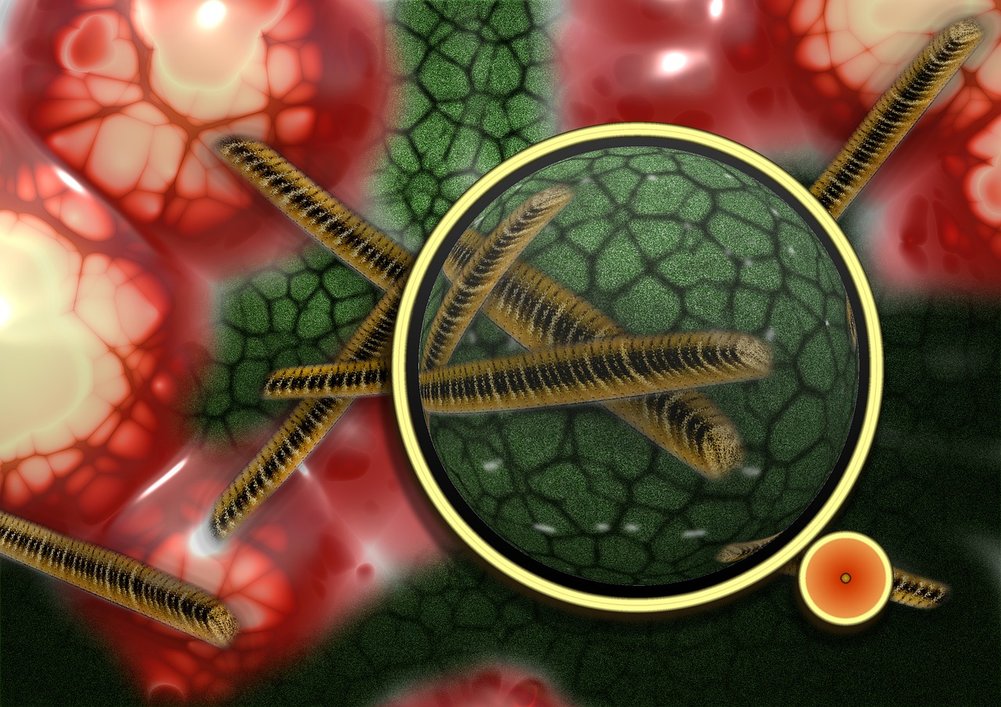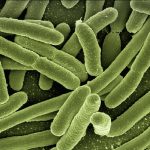MIT engineers devised new 3D printing technique that uses ink made from genetically programmed living cells. Printed layer by layer, cells, and nutrients in hydrogel form three-dimensional, interactive structure. They light up in response to a variety of stimuli and turn into living devices.
The researchers, led by Xuanhe Zhao, the Noyce Career Development Professor in MIT’s Department of Mechanical Engineering, and Timothy Lu, associate professor of biological engineering and of electrical engineering and computer science, published their results in the journal Advanced Materials.
Their “active” materials can be patterned with live cells engineered to sense environmental chemicals and pollutants as well as changes in pH and temperature. Even more, the group developed a model to predict the interactions between cells within a given 3-D-printed structure, under a variety of conditions. This model can be a guide to others in designing responsive living materials.
In recent years, some of the interesting varieties of responsive materials were used as the basis for 3D-printed inks. Among others, scientists have used inks made from temperature-sensitive polymers to print heat-responsive shape-shifting objects and polymers that shrink and stretch in response to light to print photoactivated structures. Zhao’s group used the fact that live cells can be genetically engineered to respond to a variety of stimuli. The researchers used bacterial cells instead of living mammalian cells, that was the first choice to a larger number of scientists.
“It turns out those cells were dying during the printing process because mammalian cells are basically lipid bilayer balloons,” Hyunwoo Yuk, a group member said for MIT News. “They are too weak, and they easily rupture.”
Research group chose to work with bacterial cells. They have tough cell walls that are able to survive harsh conditions and they are compatible with most hydrogels. After an extensive search of the best medium, a hydrogel with pluronic acid was found to be the most compatible material.
“This hydrogel has ideal flow characteristics for printing through a nozzle,” Zhao says. “It’s like squeezing out toothpaste. You need [the ink] to flow out of a nozzle like toothpaste, and it can maintain its shape after it’s printed.”
They engineered bacterial cells to light up in response to a variety of chemical stimuli. Their 3-D ink uses a combination of bacteria, hydrogel, and nutrients to sustain the cells and maintain their functionality.
“We found this new ink formula works very well and can print at a high resolution of about 30 micrometers per feature,” Zhao says. “That means each line we print contains only a few cells. We can also print relatively large-scale structures, measuring several centimeters.”
3-D printer was customed and the team has then demonstrated its technique by printing a “living tattoo”. A thin patch patterned with live bacteria cells in the shape of a tree, on an elastomer layer. After printing, they solidified the patch by exposing it to ultraviolet radiation. Each branch of the tree was lined with cells sensitive to a different chemical or molecular compound. To test the patch, the researchers smeared several chemical compounds onto the back of a test subject’s hand, then pressed the hydrogel patch over the exposed skin. Over several hours, branches of the patch’s tree lit up when bacteria sensed their corresponding chemical stimuli.
The researchers also programmed some cells to light up only when they receive a certain signal from another cell. They printed a thin sheet of hydrogel filaments with signal-producing bacteria and chemicals, overlaid with another layer of filaments of a signal-receiving bacteria. They found the signal-receiving filaments lit up only when they overlapped and received input signals from corresponding bacteria.
“Living computers”, structures with multiple types of cells that communicate with each other, passing signals back and forth, could once be built in a similar way.
“This is very future work, but we expect to be able to print living computational platforms that could be wearable,” Yuk says.
One application is not so far away. The researchers are aiming to fabricate flexible patches and stickers that could be engineered to detect a variety of chemical and molecular compounds. They also want to see their technique used to manufacture drug capsules and surgical implants.
“We can use bacterial cells like workers in a 3-D factory,” Liu says. “They can be engineered to produce drugs within a 3-D scaffold, and applications should not be confined to epidermal devices. As long as the fabrication method and approach are viable, applications such as implants and ingestibles should be possible.”
Learn more about “living tattoo” research in the video below:
By Andreja Gregoric, MSc











